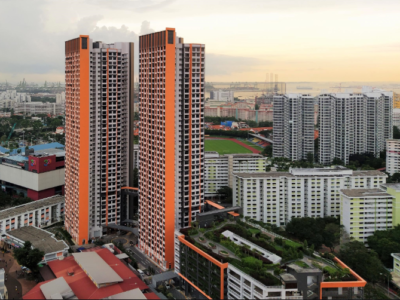Temporary policy aims to stabilize rents and optimize housing use until 2026.
SINGAPORE: Starting Jan 22, 2024, the maximum number of unrelated occupants allowed in larger public and private homes in Singapore will temporarily increase from six to eight. This adjustment, announced by the Housing and Development Board (HDB) and the Urban Redevelopment Authority (URA), is intended to alleviate mounting rental pressures and stabilize the market amid heightened demand.
The revised occupancy cap will remain in effect until Dec 31, 2026, applying to HDB flats of four rooms or larger, living quarters equivalent to or larger than a four-room flat in HDB commercial properties, and private residences with a minimum size of 90 square meters (969 square feet).
Responding to Rental Market Pressures
HDB and URA attribute the rental market strain to post-pandemic disruptions and robust demand, which caused a steep increase in rents starting in 2022. Minister for National Development Desmond Lee highlighted that the revised cap is designed to accommodate demand while minimizing community disruptions. Larger properties, which can comfortably house more occupants, were deemed suitable for this policy.
“This measure will better address the needs of renters, including families waiting for new homes and younger Singaporeans seeking independence,” Mr. Lee stated. Authorities will monitor the situation and may extend or revise the measure beyond 2026 depending on market conditions.
Application and Enforcement
Homeowners seeking to expand occupancy must apply to HDB or URA, with administrative fees applicable depending on the type of property. Occupancy limits include all residents, whether owners, occupiers, or tenants.
To ensure compliance, authorities will enforce regulations and revoke approvals in cases of serious infractions. Existing requirements for HDB owners to seek prior approval for renting out units or rooms will remain in place, with an application fee of S$10 per bedroom or S$20 for whole-flat rentals. Private homeowners will need to register with URA and pay a S$20 fee.
Industry Perspectives
Industry analysts see mixed implications for the rental market. Huttons Asia’s senior data director, Mr. Lee Sze Teck, noted that while the policy offers tenants more options, its overall impact on rents may be limited due to the scarcity of large properties. He anticipates possible downward pressure on rents for smaller homes as tenants opt for larger units.
Christine Sun, senior vice president at OrangeTee & Tie, emphasized the policy’s potential to reduce living costs and enhance space utilization, especially for underused large units. She also predicted a rise in demand for larger properties, potentially boosting their resale values.
Supporting Housing Supply
Singapore’s government is working to address housing supply shortages through several measures. Nearly 40,000 public and private residential units are expected to be completed in 2023—the highest in five years—with another 100,000 units targeted for completion between 2023 and 2025. These additions are expected to ease rental market tightness as renters awaiting new homes transition into permanent residences.
Additionally, the supply of flats under the Parenthood Provisional Housing Scheme (PPHS) has doubled since 2021, and the government aims to further expand it to 4,000 units by 2025 to support families requiring interim housing.
The authorities emphasized that they will continue to enforce strict occupancy regulations to maintain a conducive living environment and assess the policy’s long-term relevance as market conditions evolve.








